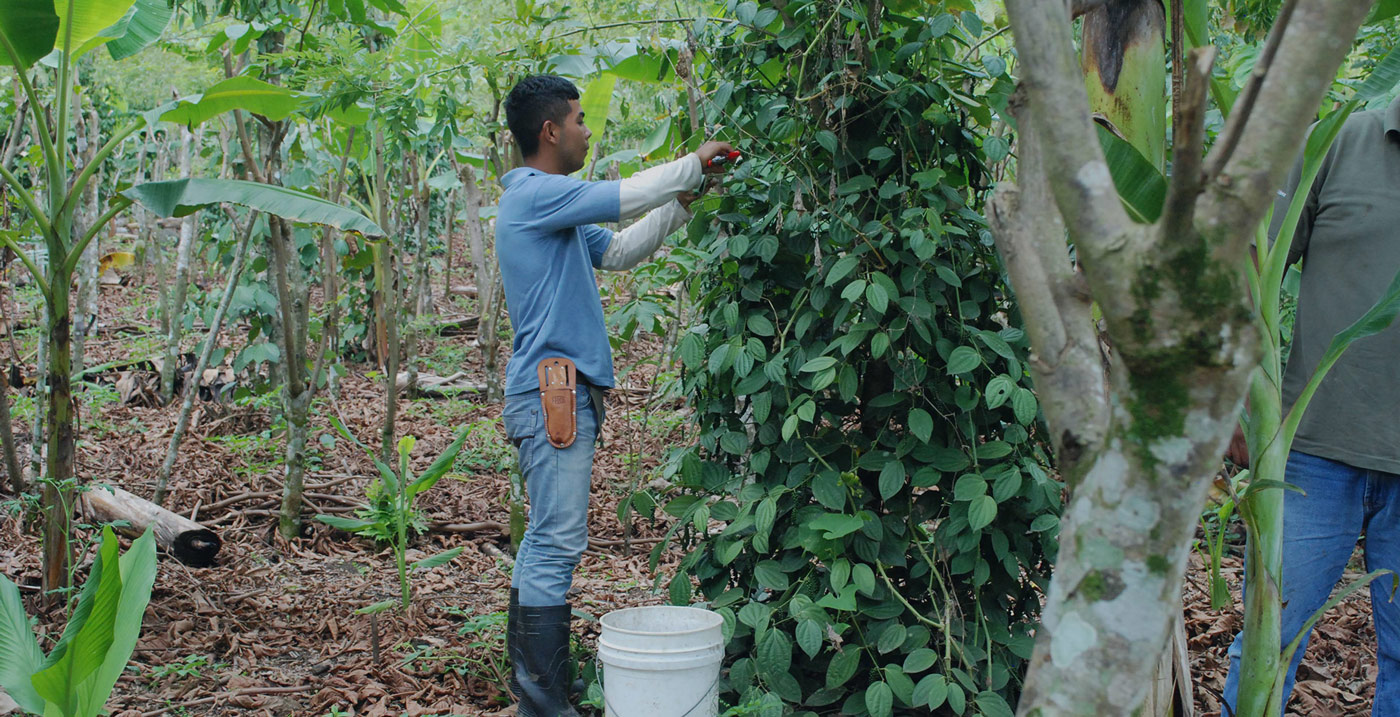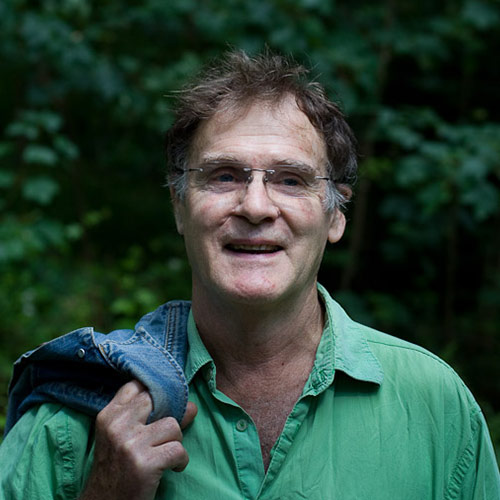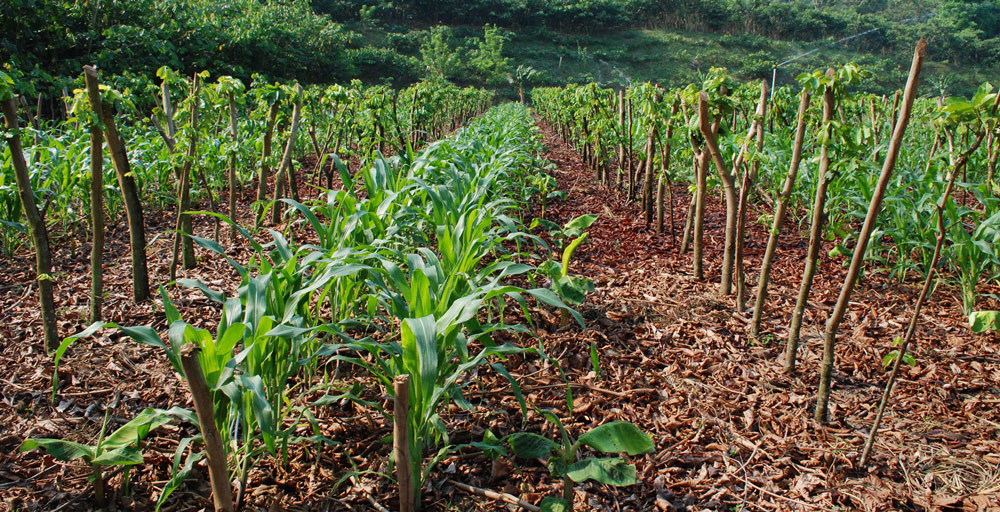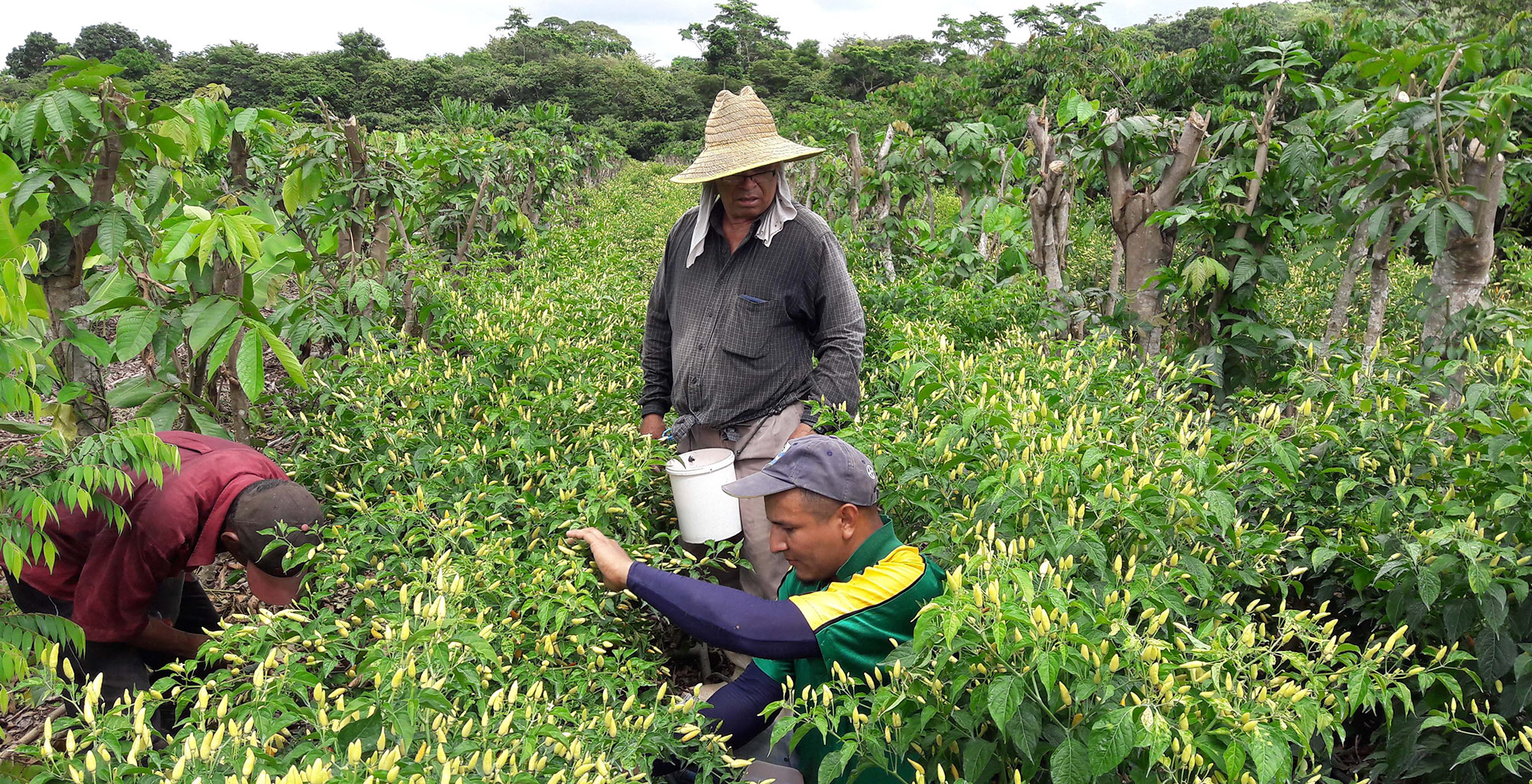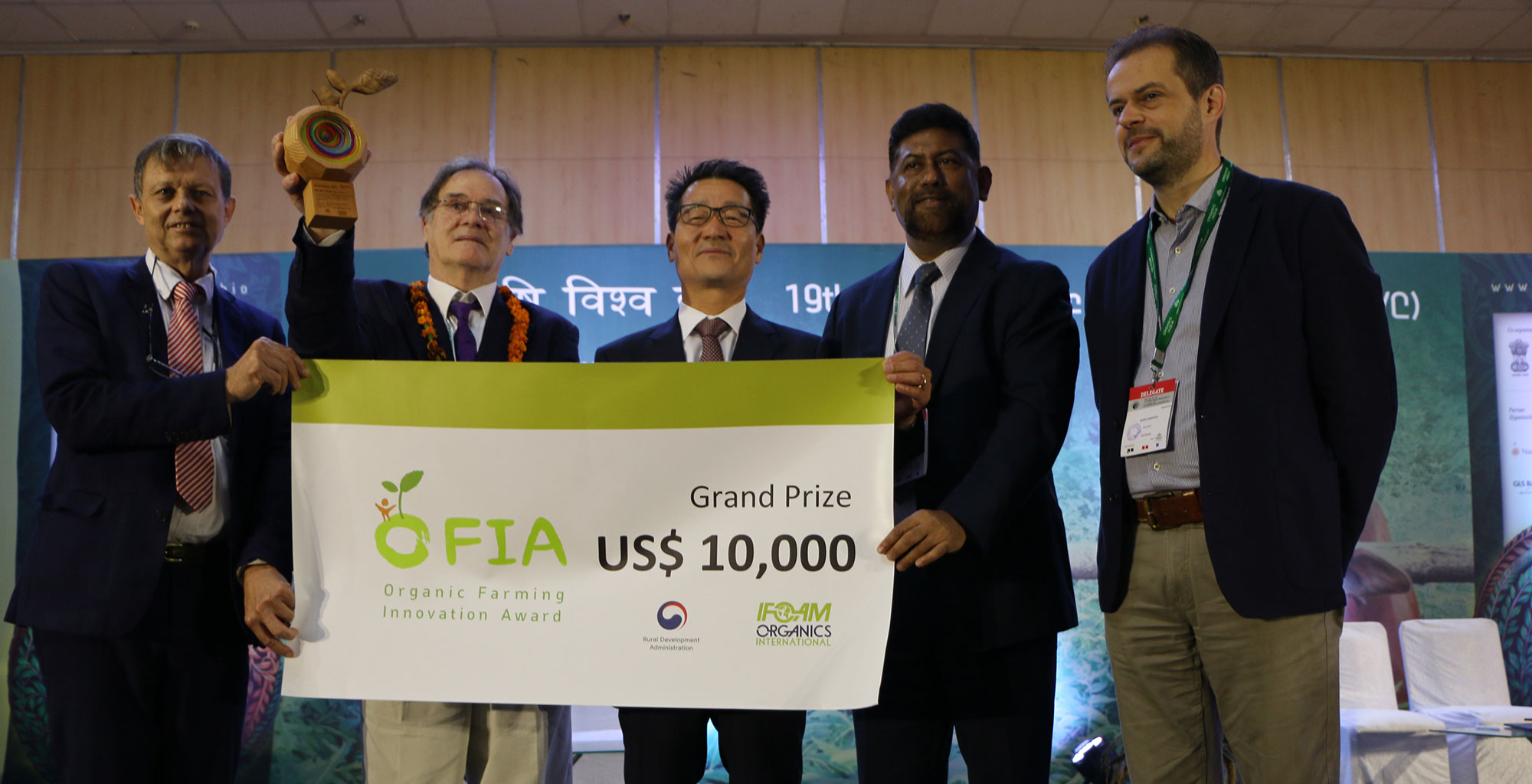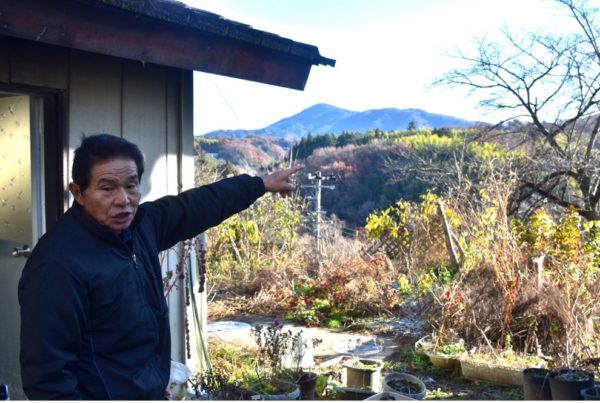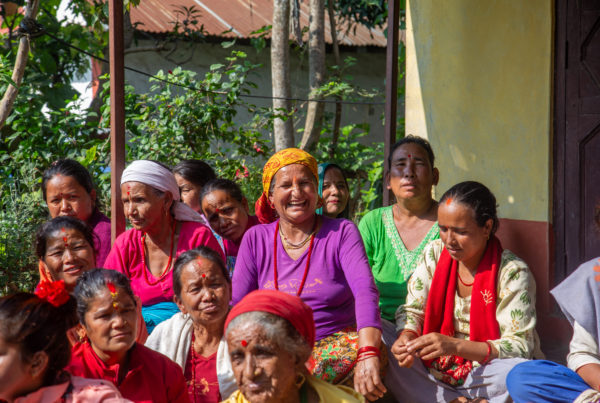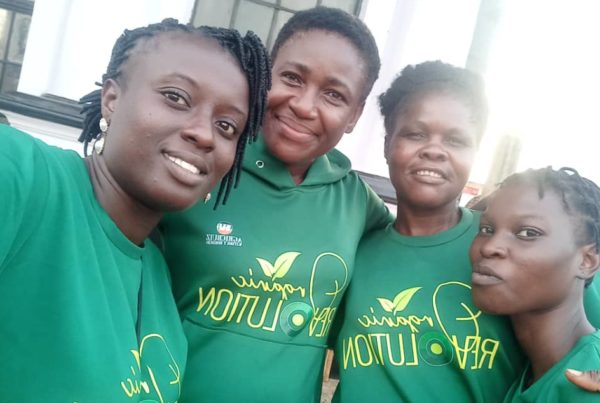What is slash and burn agriculture?
Slash and burn is a subsistence farming method used by millions of families in the tropics as their only known means of producing food. Families cut down and burn a patch of forest in order to create an area of fertile soil on which they can grow their food.
However, shallow, acid rain forest soils are rapidly leached of nutrients, so although slash and burn generally gives a good crop for the first year, by the third year, crops often fail completely. This forces family who depend on slash and burn to keep clearing fresh areas of rainforest every few years.
© Inga Foundation
How does Inga alley cropping help?
Inga alley-cropping is a system of deep mulching using pruned green leaves from the trees which are contour-planted in hedgerows. It is capable of achieving food-security in basic-grains for the family, upon a permanent plot which can be located near their dwelling. The system produces firewood for the kitchen and virtually eliminates the need for weed-control. Additional plots enable the whole family to be involved in their own cash-crop economy; located, perhaps for the first time, on their own doorstep.
How can the farmers control weeds?
Weed-control is achieved, firstly, by shading as the growing trees develop a dense canopy; and secondly, by smothering under the deep, tough mulch following the first pruning of the trees. Once the crop has grown (3 months for maize and beans), the trees are left to reform their canopy until the whole process is repeated the following year.
The trees are pruned to chest height, the branches are stripped of foliage for the mulch; the finer branches are placed on the upslope side of the trees to help prevent soil movement, and the larger stems and branches are removed as a favourite domestic firewood. This tackles another important cause of deforestation.
The crop is then planted through the mulch, so no herbicides or pesticides are needed. The tough mulch provides almost 100% weed-control and physically protects the vital upper layers of soil, where the great majority of the fine roots of the original forest would have been concentrated and where the fine roots of the trees and crops are also concentrated. It is here that one encounters most of the soil’s essential nutrients. The protection of these superficial soil layers against overheating under the direct tropical sun and against erosion in violent rain storms is also crucial. Both of these factors are hugely important in these times of climate change.
The crop is harvested once it is fully matured, and then the Inga is left to grow until the next planting season arrives, by which time they have fully recovered and the whole cycle is ready to be repeated.
What is the impact on soil fertility?
We have recently found that it is possible to restore soils rendered sterile by repeated burning episodes over a century or more to fertility, through the combination of the trees and cheap soil mineral supplements. Applying a mixture of rock phosphate, Dolomitic lime and K-M sulfates transforms and accelerates Inga’s ability to capture the site and to achieve readiness for first pruning. Moreover, beans can be planted alongside the developing Inga, giving the family a valuable crop 2 years before the system’s first use. This has proved a game-changer.
This means farmers can maintain soil fertility and good harvests year after year, thereby breaking the cycle of slash and burn and allowing families to gain long-term food security on one piece of land.
How did you develop the system?
I originally researched the topic at Cambridge and in rain forest sites in Costa Rica. Based on that research, I secured funding from the EU for a long-term investigation running from 1988 until 2002.
During this time, we trialed many agricultural systems, including conventional alley cropping. After 7 years of trial, the only system to emerge as sustainable was Inga Alley-cropping, supplemented with small additions of rock-phosphate. We then ran pilot studies of the system with farming families in Honduras, before establishing the Inga Foundation in 2007 as a UK-registered Charity to implement the findings of those years of research and development.
We faced countless hurdles, both natural and human-induced, but we overcame them with persistence and patience. I was sure that we had a solution to a massive, global problem of food insecurity and environmental destruction, and that kept me going.
© Inga Foundation
How do you work with local communities to encourage them to adopt the system?
Through the Inga Foundation, we’re now working closely with local communities in the buffer zone of one of the last remaining rain forest reserves in Honduras to implement this new and sustainable alternative to slash and burn. The system grows basic grains (maize and beans) for food security and cash-crops like plantain, cucurma, and black pepper.
Following visits to our demonstration farms, other groups are replicating the Guama (Inga) model in Peru, Bolivia, Nicaragua, Guatemala, Belize, and Madagascar.
For subsistence farmers, changing the way they farm is a huge decision. Their lives depend on the food they produce, so they have had good reason to be conservative in their decision making. I’m a farmer as well as an ecologist, so I’ve always emphasized the importance of establishing trust and understanding and working together with the local people. Our success is built on a “bottom-up” adoption process for farmers.
What’s the next step for your work and the Inga Foundation?
The Cambridge alley-cropping projects and Inga Foundation’s Land for Life program today can be seen as a process of establishing credibility at differing scales for a revolutionary system and the integrated rural livelihood of which it is the vital heart.
Firstly, credibility at scientific level; secondly in pilot projects with subsistence farming families chosen by our collaborating NGOs in Honduras; thirdly, credibility with those NGOs themselves and the kind of people who would be leading the wider implementation of the system in their respective countries; and now, credibility at the scale of whole populations in the natural landscape units of river catchments.
We want to use our demonstration farms and the 240 families with whom we are working to convince decision-makers and funding bodies that this really works; that the energy to make it work is actually not our own but that of the family members, young and old, who have planted, with our help, over 2 million trees in various agroforestry configurations, since the program’s inception in 2012.
About the Organic Farming Innovation Award (OFIA)
Every three years, at the Organic World Congress (OWC), IFOAM-Organics International, the Rural Development Administration (RDA) of the Republic of Korea, and the IFOAM Technology Innovation Platform (TIPI) award outstanding organic innovators with the Organic Farming Innovation Award (OFIA).
The overall goal of OFIA is to contribute to solving problems and exploring potentials in order to increase effectiveness, efficiency, and productivity of organic farming, improve viability for the environment, plants, animals and human beings.
The application for the award should meet the criteria:
- Innovation: are new in their context.
- Applicability: are applicable to organic farming, processing, and trade.
- relevance: are relevant for solving real problems or exploring new potentials.
- Impact potential: have the potential to have a great impact.
By highlighting the innovations through OFIA, the global organic community emphasizes the key role innovations play to accelerate the adoption of organic agriculture worldwide. Further, it has the mission to motivate innovations and to boost the uptake of the highlighted innovations.


